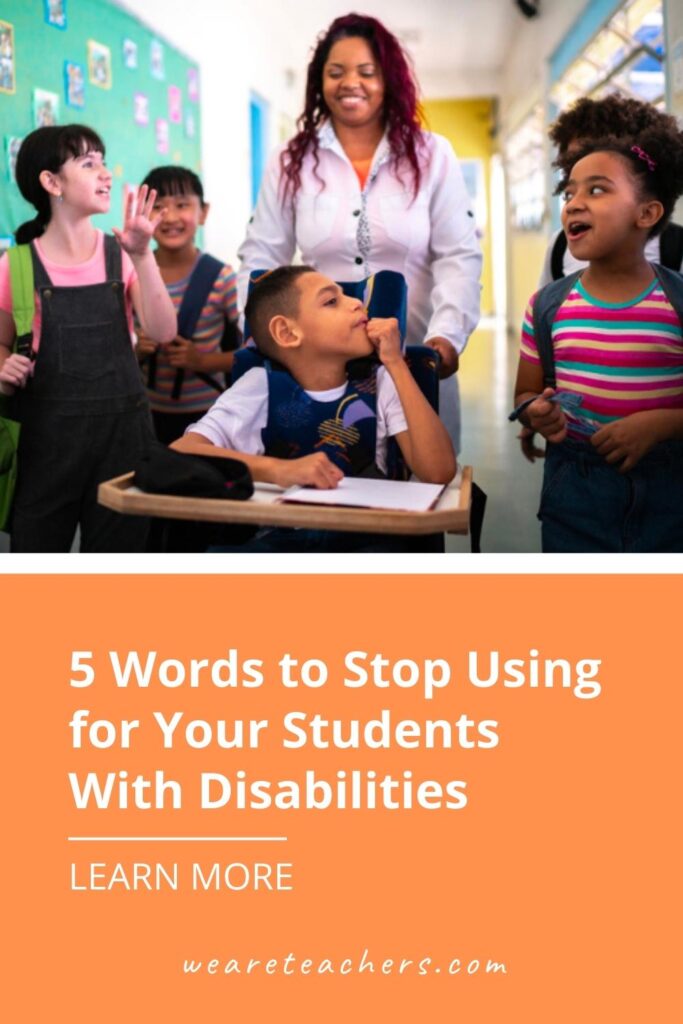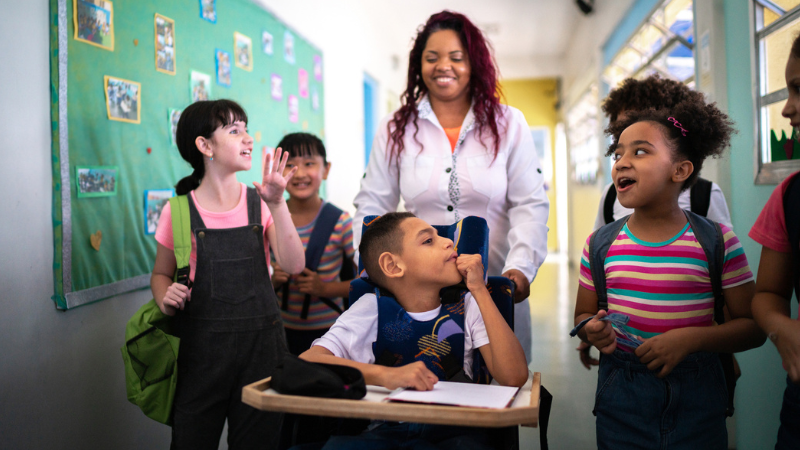As educators, we are constantly using language and communication to teach and inform our students. The specific words we choose to use carry meaning and connotations based on their etymology, the history of those words, and our current cultural and political contexts. Our students will also learn the words we use and repeat them at school, at home, and in the community. Thus, it is critical to examine the words we use and the impact they can have on others, specifically kids with disabilities.
Below are some common terms to replace in your vocabulary and why.
Special Needs
The term “special needs” is used pervasively in our field to refer to students with disabilities. However, this term is incredibly ableist. It communicates that individuals who benefit from various support needs are somehow “special” or “different” from the “average.” Every individual human being has different needs and benefits from different supports. Furthermore, our support needs change over time and even from day to day. If you didn’t sleep well, you may need more visual reminders the next day to remember your tasks. There is nothing “special” about benefiting from different supports throughout our lives in order to have our needs met. So instead of using “special needs,” we can use “students with disabilities” or specify specific support needs, such as “students who benefit from communication support.”
Handicapped
This term is frequently used to refer to individuals with disabilities. The term is commonly used in phrases such as “handicapped parking” or “student with a handicap.” However, it is just that, a euphemism. By attempting to avoid using the word disability, we are unintentionally communicating that there is something inherently wrong with disability. Instead of using handicapped, you can say “parking for individuals with disabilities” or “student with a disability.”
“Functioning” Labels (Low-Functioning/High-Functioning)
We often see “functioning” labels when referring to student performance within IEPs and other documentation. As a teacher, I frequently heard other teachers refer to their students as having “high-functioning ADHD” or “low-functioning autism.” These labels are highly problematic as they qualify individuals’ support needs against a nonexistent “norm.” Rather than using functioning labels, you can describe specific support needs that benefit the student, such as “a student who benefits from help with personal hygiene routines.”
Wheelchair-Bound/Confined to a Wheelchair
These terms are frequently used to describe students with physical or motor disabilities. However, they communicate ableism by relaying that individuals are constrained by mobility devices. However, wheelchairs and other mobility devices provide individuals with physical and motor disabilities more freedom and independence. Instead of these terms, you can use “wheelchair user” or “student who uses a wheelchair.”
Victim of/Suffers From Disability
This language infers that disability is a negative experience. Instead, disability is a part of the human experience. Disability is diversity and is celebrated and embraced by those in the disability community. You can use “experiences X disability” to eliminate the judgment about disability that’s built into the two terms above.
These are just a few examples of words that contribute to ableism. Disability rights activist Lydia X. Z. Brown has curated a more comprehensive list of ableist terms to eliminate from your vocabulary. Our language has the power to influence how students view themselves and their disabilities and how allies view disability. It is critical to think about the words we teach our students and how these words will impact them long-term. For more detailed information on language recommendations, review the Disability-Inclusive Communication Guidelines developed by the United Nations.
For more articles like this, be sure to subscribe to our newsletters.


